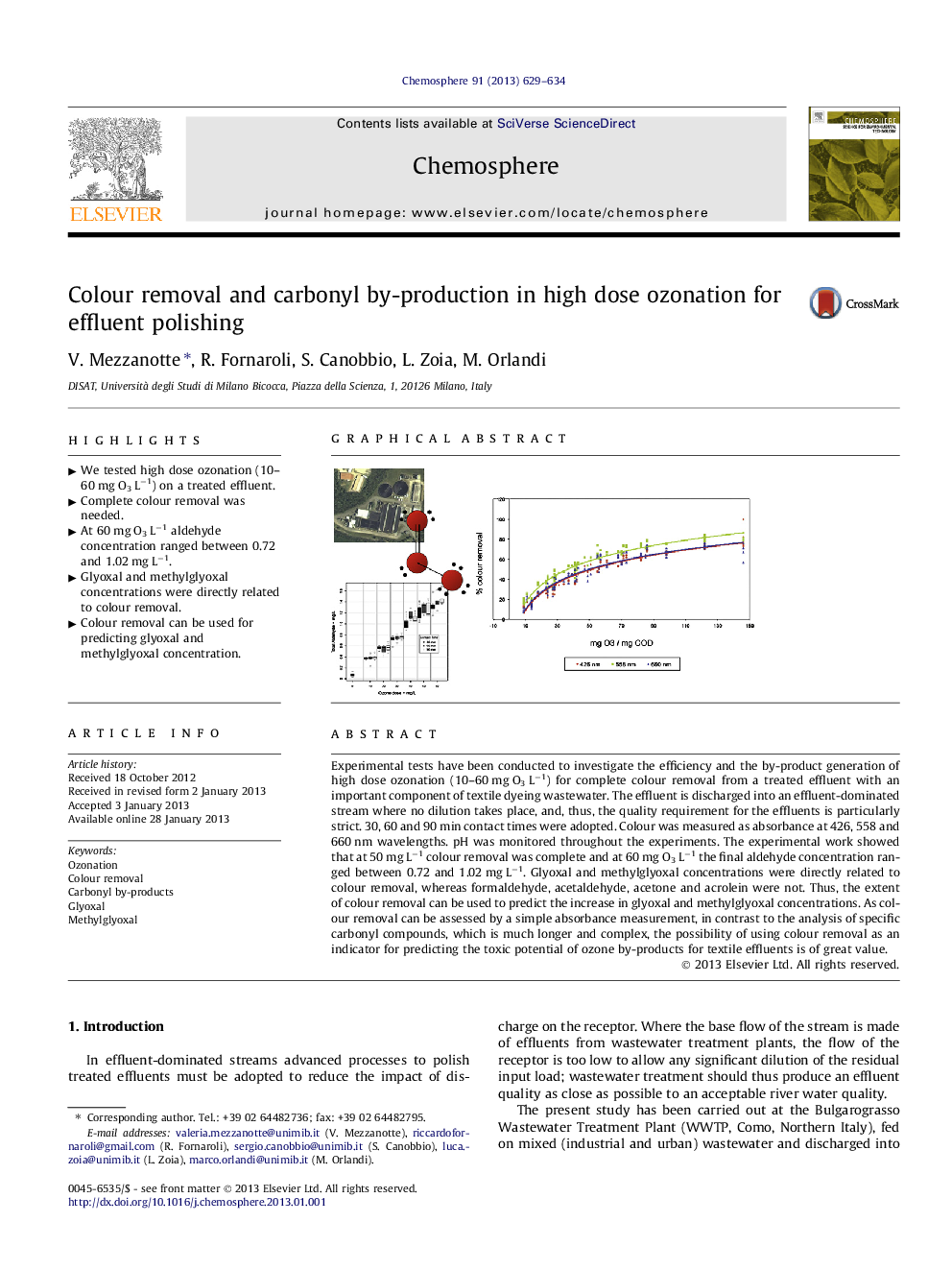| کد مقاله | کد نشریه | سال انتشار | مقاله انگلیسی | نسخه تمام متن |
|---|---|---|---|---|
| 4409378 | 1307480 | 2013 | 6 صفحه PDF | دانلود رایگان |

Experimental tests have been conducted to investigate the efficiency and the by-product generation of high dose ozonation (10–60 mg O3 L−1) for complete colour removal from a treated effluent with an important component of textile dyeing wastewater. The effluent is discharged into an effluent-dominated stream where no dilution takes place, and, thus, the quality requirement for the effluents is particularly strict. 30, 60 and 90 min contact times were adopted. Colour was measured as absorbance at 426, 558 and 660 nm wavelengths. pH was monitored throughout the experiments. The experimental work showed that at 50 mg L−1 colour removal was complete and at 60 mg O3 L−1 the final aldehyde concentration ranged between 0.72 and 1.02 mg L−1. Glyoxal and methylglyoxal concentrations were directly related to colour removal, whereas formaldehyde, acetaldehyde, acetone and acrolein were not. Thus, the extent of colour removal can be used to predict the increase in glyoxal and methylglyoxal concentrations. As colour removal can be assessed by a simple absorbance measurement, in contrast to the analysis of specific carbonyl compounds, which is much longer and complex, the possibility of using colour removal as an indicator for predicting the toxic potential of ozone by-products for textile effluents is of great value.
Figure optionsDownload as PowerPoint slideHighlights
► We tested high dose ozonation (10–60 mg O3 L−1) on a treated effluent.
► Complete colour removal was needed.
► At 60 mg O3 L−1 aldehyde concentration ranged between 0.72 and 1.02 mg L−1.
► Glyoxal and methylglyoxal concentrations were directly related to colour removal.
► Colour removal can be used for predicting glyoxal and methylglyoxal concentration.
Journal: Chemosphere - Volume 91, Issue 5, April 2013, Pages 629–634